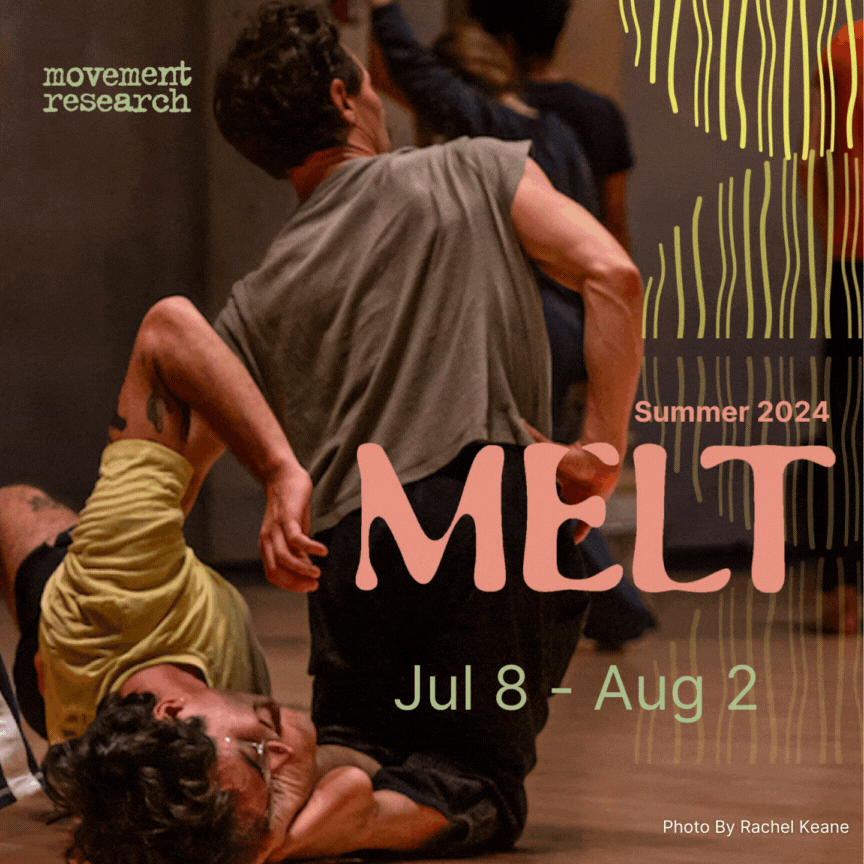CC co-editor, Marissa Perel interviewed Sarah Michelson on “Devotion Study #1 – The American Dancer” which was presented at the 2012 Whitney Biennial. Since the publication of Part One of this interview, Michelson has been selected as the recipient of the 2012 Bucksbaum Award, which is given every two years to one of the artists in the Biennial. Regarding the process of preparation in the museum setting, Michelson reveals, “Sometimes, if the dancers were having a rough day, it was hard. There was no place to go. There was a green room that we thought was going to be locked, but it was an art installation, so it had to be open!”
Interview Date: March 28, 2012
Download a PDF of this conversation
Marissa: Your previous work has had a unique humor that I’ve always admired. In this piece, it felt like something was at stake, there wasn’t time for that, except for maybe the horse. What is your relationship to humor now?

Sarah: I just think I am funny [laughs]. I think that in most rehearsal processes for my work, though not in this one so much, there is a lot of laughing. I laugh a lot at how extreme I want it to be or how far we have to go. Somehow, that’s where it is. That’s where it lies. But, this show didn’t have any decorative element, really. Obviously, it had a lot of well conceded things about the way it looked, but it didn’t have anything to juxtapose, and I think sometimes that’s where the humor is: in some kind of juxtaposition. The horse and the text, could potentially be seen as humorous in this piece [at the Whitney], and, yet, I think what we did was painful and excruciating. It is also quite funny to do one step only and call it a dance.
Marissa: As opposed to creating a massive spectacle?
Sarah: Totally, yes, to actually deny all spectacle. I keep trying to deny all spectacle, but somehow it ends up still a spectacle.
Marissa: Nicole sweating through her costume with that teased hair and makeup is a spectacle. The text amplified it because she’s working so hard and Jay [Sussman] is reading Richard [Maxwell]’s text where he describes his sexual fantasies when he’s in the shower. Tell me more about how generated the text for this piece?

Sarah: I knew that the basic elements of the previous Devotion had to be present in some way. I knew right away that Richard had to write some more text for me. Our relationship has become very cued to that.
Marissa: Was that something where you both sat down and had this talk? Did you both script it?
Sarah: No. I didn’t script it. He has incredible instincts and he knows me. I did ask him for it to be on the subject on art making and devotion, and to replicate some kind of conversation between us, or the development of our relationship in some way. He did one version and I had some feedback about it. We had a couple of sessions together where we worked on it. I think by the end it was like, version five! In Devotion, I had this relationship with curators as part of the work and there was this very loose idea of retrospective. So, having a curator be part of this work in some way felt logical, or felt to have integrity. I liked the idea that I was reading the script, playing myself and Jay was playing Rich. There is a removal on both sides because Rich actually wrote me, and he wrote himself but Jay is reading his part.
Marissa: Did the Balanchine text, “superficial Europeans are accustomed to say that American artists have no ‘soul,’ etc.” have any intended irony behind it?
Sarah: Well, that is funny. There was a talk-back after [one of the performances], and a European man said, “Why would you write that? Europeans aren’t superficial!” He was really mad. I told him, “I didn’t say it, Balanchine said it,” he said, “You put it in! I just don’t see it this way.” I said, “Yeah, that’s OK. I am just bringing those issues up. I am not saying Europeans are superficial. I am, in fact, European, possibly I am superficial, and I’m willing to go with that.”
[Laughter]
Marissa: I’m curious, on this issue of spectacle we’ve been discussing, how did the dancers warm up for the performance? Were they in public the whole time?

Sarah: The gallery opens at 11 AM, and the show was at 4 PM. The curators, especially Elizabeth, were very concerned. I really didn’t get it at first what they had done. They had, at my request, basically allowed all this real estate to dance. Right away, there was this question of, “Well what’s going to happen in the space when the gallery’s open but the show isn’t happening?” Usually, we when we have a show at 8PM, everyone comes at 2PM to warm up. So, that’s how I decided that everyone would warm up for gallery hours. It was very much in the public gaze. Some days worked better than others. Sometimes, if the dancers were having a rough day, it was hard. There was no place to go. There was a green room that we thought was going to be locked, but it was an art installation, so it had to be open! There was nowhere to get dressed. Everyone was just getting naked. There was that dressing room and a little bit of space behind the risers. If it was really an emergency, or we had to cry we’d go there because there was no other private place to go. It was tough.
Marissa: I remember you mentioning how hard you had to fight to be able to bring water up there!
Sarah: Yeah, it was a big issue because water is not allowed in the galleries. It wasn’t that I had to fight to bring it in. Everybody understood that the dancers had to have water, but no one was able to make it automatically happen. Someone said, “OK, they’re dancers. Not only are they dancers, but they are going to be working really hard and we need water.” It’s required that we’re here from 11am to 6pm, so, we’re going to need water. There’s just no show if there’s no water. Right away, the curators and the Biennial coordinator really understood that. But, it was trying to get the museum to allow that to happen. It was a really difficult question. I think we were allowed like twenty bottles of water. In the end, we all just had our own water and snacks. It was all on the lowdown.

Marissa: What do you think about that for the future, when you perform in visual art spaces, or in the museum again?
Sarah: In that scenario, where it was the Biennial, I totally understood that the gallery had to be open and inhabited. Everyone wanted to be there because everyone wanted to warm up and be getting ready for the show. So, there was no way to make up something else. But there wasn’t any possibility for privacy. Had it not been in the Biennial then that green room would’ve been an actual green room. It was interesting, really tough for the dancers, but it wasn’t a negative experience. I was sick for a lot of it. and I had my daughter, Prudence there. Obviously, she had to have food and drink.
Marissa: So, you brought your daughter to the Whitney?
Sarah: She goes everywhere with me pretty much, so she would come straight after school and be there until at least 5 PM.
Marissa: What is it like to be at this place in your career with a child and a life?
Sarah: It’s tough. It’s great. I feel really lucky. When I got pregnant and when she was born, I had it in my mind that I’d stop [dancing and choreographing]. When I think about it now, she was born November 21st, and I had a show at BAM on January 28th, and then my piece, Dover Beach, was that June. So, I never stopped! She’s been really a part of that. Her closest friends are the dancers and the dancers are also the babysitters and all that stuff. It’s very beautiful. This line of work is not completely financially viable, so it can be hard part managing a family, to be honest.
Marissa: How do you manage your production costs with your personal need for support?
Sarah: Everything goes into to the work. It wasn’t just performance, it was the production of a an entire piece: designing and building the floor, installing the lights, cables, etc, paying the dancers, paying for rehearsal space. I needed to pay for many hours of babysitting for about six months, which was all for rehearsal. I realized that for most artists installing their work in the Biennial, we’re talking about an object, but I was charged with making a whole experience, a whole world really.
thumbnail image credit: http://www.artfagcity.com/2012/02/29/slideshow-the-cats-out-of-the-biennial-bag/whitneybiennial__80/






